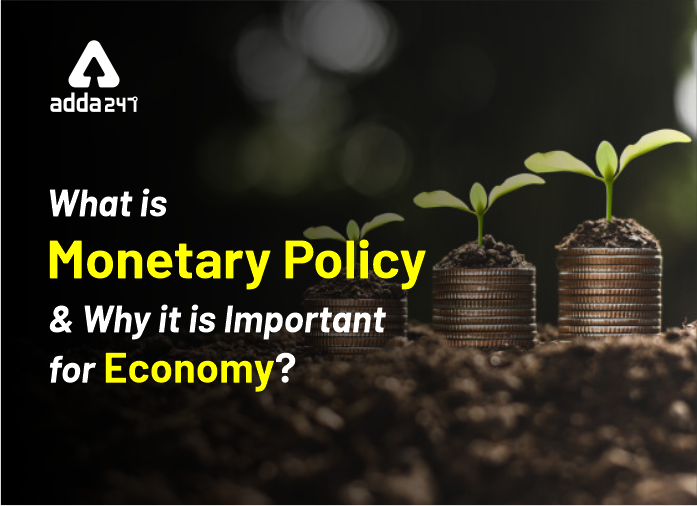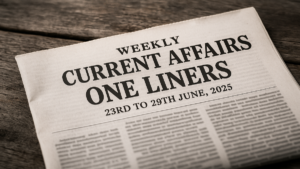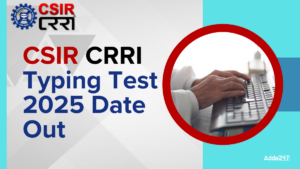Monetary Policy: RBI will come up with Sixth Bi-Monthly Monetary Policy Statement on February 6, 2020. Reserve Bank of India is vested with the responsibility of holding monetary policy under the RBI Act, 1934.
Monetary policy is the policy of the Central Bank (Reserve Bank of India) with regard to the use of monetary instruments (Repo rate, reverse repo rate) under its control to achieve the goals specified in the Act. In the previous monetary policy, RBI kept the rates unchanges after 5 consecutive changes.
You may also like to check:
- Union Budget 2020-21 Key Highlights: Download PDFs
- Union Budget 2020: Glance Of New Schemes and Initiatives
Objective of Monetary Policy
The main objective of monetary policy is to maintain price stability with keeping growth in mind as price stability is the key to sustainable growth. However, RBI Act 1934 was amended to give a statutory basis for the implementation of the flexible inflation framework. Prior to the amendment in the RBI Act in May 2016, the flexible inflation targeting framework was governed by an Agreement on Monetary Policy Framework between the Government and the Reserve Bank of India of February 20, 2015.
Features
RBI Act now gave Reserve bank the following mandates:
- To operate the monetary policy framework of the country.
- Setting the policy (repo) rate based on an assessment of the current and evolving macroeconomic situation; and
- Modulation of liquidity conditions to anchor money market rates at or around the repo rate.
- Change in Repo rate transmit through the money market to the entire financial system influencing aggregate demand which is a key determinant of inflation and growth.
- After announcement of Repo Rate, the operating framework designed by the Reserve Bank forecast liquidity management on a day-to-day basis through appropriate actions aiming at anchoring the operating target known as the weighted average call rate (WACR).
About Monetary Policy Committee
The Monetary Policy Committee (MPC) was constituted under Section 45ZB by the Central Government who determines the policy interest rate required to achieve the inflation target.
The Monetary Policy Department (MPD) of Reserve Bank assists the MPC in formulating the monetary policy. Suggestions of key stakeholders in the economy, and analytical work of the Reserve Bank contribute to the process for arriving at the decision on the policy repo rate and other things.
The Financial Market Committee (FMC) meet on daily basis to review the liquidity conditions so as to ensure that the operating target of monetary policy (weighted average lending rate) is kept close to the policy repo rate.
Monetary Policy Committe Constitutes
Section 45ZB of the amended RBI Act, 1934 provided for an empowered six-member monetary policy committee (MPC) to be constituted by the Central Government with a notification in the Official Gazette.
In 2016, Central Government framed a Monetary Policy Committee. There will be six member in the committee. They will be as follows:
- Governor of the Reserve Bank of India will be the Chairperson (ex-officio)
- Deputy Governor of the Reserve Bank of India, in charge of Monetary Policy (ex-officio),
- One officer of the Reserve Bank of India nominated by the Central Board of Director
Three other members are appointed by the central government, for a period of four years or until further orders, whichever is earlier. For now they are:
- Shri Chetan Ghate, Professor, Indian Statistical Institute (ISI)
- Professor Pami Dua, Director, Delhi School of Economics, a Member; and
- Dr. Ravindra H. Dholakia, Professor, Indian Institute of Management, Ahmedabad
Also check:
- UNION BUDGET AND ECONOMIC SURVEY COMPLETE DISCUSSION BATCH English Medium Live Classes
- UNION BUDGET AND ECONOMIC SURVEY 2020 COMPLETE DISCUSSION BATCH Bilingual Live Classes
Why is Monetary Policy Needed?
It is needed to achieve macroeconomic policy. Monetary Policy is needed due to the following reasons:
- Economic stability at full-employment or potential level of output;
- Price stability by controlling inflation and deflation; and
- Economic growth in the economy.
Instruments of Monetary Policy
Following are the direct and inderect instruments of implementing monetary policy:
- Repo Rate
- Reverse Repo Rate
- Liquidity Adjustment Facility (LAF)
- Marginal Standing Facility (MSF)
- Corridor
- Bank Rate
- Cash Reserve Ratio (CRR)
- Statutory Liquidity Ratio (SLR)
- Open Market Operations (OMOs)
- Market Stabilisation Scheme (MSS)
Last monetary policy of this financial year will be out tomorrow. We will update you with more details.
You may also like to read:
- Current Affairs one-liner: Current Affairs 2019 pdf
- Current Affairs & Daily GK Updates 2019
- Download GA Power Capsule for Bank/Insurance Exams



 Weekly Current Affairs One Liners 23rd t...
Weekly Current Affairs One Liners 23rd t...
 CSIR CRRI Typing Test 2025 Date for JSA ...
CSIR CRRI Typing Test 2025 Date for JSA ...
 Can Final Year Students Apply for SBI PO...
Can Final Year Students Apply for SBI PO...


